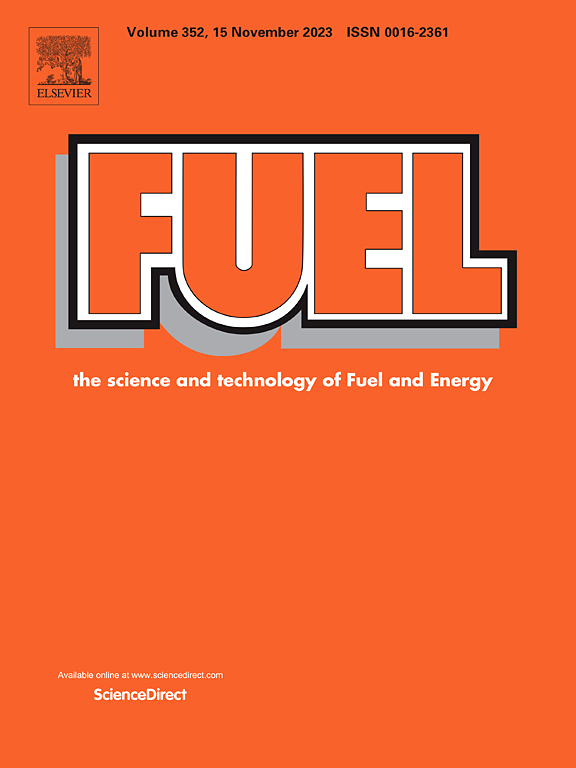构建具有稳定内置电场的 Ni2P/CoP 异质结,提高工业电流密度下的整体水分离能力
IF 7.5
1区 工程技术
Q2 ENERGY & FUELS
引用次数: 0
摘要
构建具有强大内置电场(BIEF)的异质结用于电催化水分解仍然是一个艰巨的挑战,这是由于电催化过程中组件的不稳定性导致界面电子无法持续优化。在此,基于巧妙的结构设计,通过简单的两步工艺制造Ni2P/CoP-NF异质结来解决问题。作为析氧反应(OER)电催化剂,在50、100和500 mA·cm−2下分别表现出238 mV、278 mV和347 mV的低过电位,并且在相同的电解质中表现出优异的析氢反应(HER)性能。DFT计算和实验结果表明,Ni2P/CoP-NF中的BIEF促进了OER中Co- o转化为活性位点CoOOH,而Co(OH)2作为HER的活性位点,极易与H2O结合有效形成H*,提高了整体的水裂解活性。Ni2P结构在整个电催化过程中保持稳定,仅作为电子泵持续优化CoOOH和Co(OH)2在界面处的电子构型,使Ni2P/CoP-NF获得持久、高的双功能活性,在500 mA cm−2下保持300小时的稳定性。这项工作为解决连续界面电子优化的挑战提供了一种有效的方法,这种挑战受到异质结组件结构不稳定性的阻碍,从而在工业电流密度下实现高效、稳定的水分解。本文章由计算机程序翻译,如有差异,请以英文原文为准。

Constructing Ni2P/CoP heterojunction with stable built-in electric field to boost overall water splitting at industrial current density
Constructing a heterojunction with a robust built-in electric field (BIEF) for electrocatalytic water splitting remains a formidable challenge, resulting from component instability during the electrocatalysis process that prevents the interface electron from being continuously optimized. Herein, based on a ingenious design of the structure, the issues is dresses by fabricating a Ni2P/CoP-NF heterojunction through a simple two-step process. As an oxygen evolution reaction (OER) electrocatalyst, it demonstrates low overpotentials of 238 mV, 278 mV, and 347 mV at 50, 100, and 500 mA·cm−2, respectively, and also demonstrates excellent hydrogen evolution reaction (HER) performance in the same electolyte. DFT calculation and experimental results reveal that the BIEF in the Ni2P/CoP-NF promotes Co-O transformation into active site CoOOH in OER, while Co(OH)2, acting as the active site for HER, binds readily with H2O for effective H* formation, enhancing overall water-splitting activity. The Ni2P structure remains stable in the whole electrocatalysis process, acting solely as an electron pump to continuously optimize the electronic configuration of CoOOH and Co(OH)2 at the interface, allowing Ni2P/CoP-NF to achieve durable, high bifunctional activity, maintaining stability for 300 h at 500 mA cm−2. This work offers an effective approach to addressing the challenge of continuous interface electron optimization impeded by the structural instability of heterojunction components for efficient, stable water-splitting at industrialcurrent density.
求助全文
通过发布文献求助,成功后即可免费获取论文全文。
去求助
来源期刊

Fuel
工程技术-工程:化工
CiteScore
12.80
自引率
20.30%
发文量
3506
审稿时长
64 days
期刊介绍:
The exploration of energy sources remains a critical matter of study. For the past nine decades, fuel has consistently held the forefront in primary research efforts within the field of energy science. This area of investigation encompasses a wide range of subjects, with a particular emphasis on emerging concerns like environmental factors and pollution.
 求助内容:
求助内容: 应助结果提醒方式:
应助结果提醒方式:


